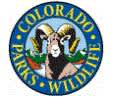Colorado’s Vallecito Reservoir Offers Anglers Variety
OutdoorHub 06.04.12

Anglers looking to add variety to their fishing experience should consider heading to Vallecito Reservoir in southwest Colorado. The reservoir has rebounded strongly from the effects of a major forest fire in 2002 and is supporting good populations of sport fish, according to Colorado Parks and Wildlife.
This large, high-elevation lake 20 miles northeast of Durango covers about 2,700 acres and its clear, clean waters support a lot of aquatic life, said Jim White, aquatic biologist for Parks and Wildlife.
“Vallecito is a very productive reservoir that holds several different fish species and some trophy-sized lunkers,” White said.
Located in a broad valley and surrounded by the San Juan National Forest, the setting at nearly 8,000 feet is beautiful and classic Colorado – sweeping forested slopes reaching to high mountain peaks.
“Not only is fishing good, but it’s also one of the most beautiful places to fish in the state,” White said.
Trout continue to be the top target for anglers. Brown trout can grow large and every year Parks and Wildlife stocks thousands of catchable-size rainbow trout. Last fall, 35,000 12-inch rainbows were stocked, and they’ve grown bigger since then.
The tasty kokanee salmon are also popular among Vallecito anglers. After the 2002 fire, soil and ash ran into the lake knocked down the population. But stocking efforts since then have boosted the number and now the salmon are once again thriving and abundant.
The population of small-mouth bass is also growing at Vallecito.
For years, anglers from throughout the country have traveled to Vallecito to fish for northern pike. This aggressive predator feasts on trout and kokanee and can grow to more than 25 pounds. There are no bag or possession limits for the species.
Walleye, another predator species native to northern states and Canada, are abundant in the reservoir –although it takes some special skills to catch them.
Unfortunately, both northern pike and the walleye, because they are predators, accumulate mercury in their bodies as they grow. Consequently, the Colorado Department of Health and Environment has issued a fish consumption advisory. Children under 6 years old should not consume meat from pike that are more than 27 inches in length or meat from walleye that are over 18 inches. Pregnant and nursing women should also not eat more than one meal a month from these fish. The general population should not eat more than two meals per month of these fish.
For complete details on the consumption advisory, please go to the health department’s web site at:
http://www.cdphe.state.co.us/wq/FishCon/VallecitoADVISORYpdf.
Trout and kokanee, which feed on plankton and insects, do not bio-accumulate mercury and pose no health concerns.
For anglers willing to do a little hiking, good fly-fishing for trout can be found nearby on Vallecito Creek and the upper Pine River, the two streams that supply most of the water to the reservoir.
“Anglers have a lot of choices and usually have a good degree of success at Vallecito and around the area,” White said.
Vallecito is also a great place for families. There are four U.S. Forest Service campgrounds located at the lake that range in price from $16 to $22 per night. Numerous lodges, cabins and private campgrounds can be found around the reservoir. For information about facilities, see: www.vallecitolakechamber.com.
A full service marina is available and Parks and Wildlife operates an inspection station for aquatic nuisance species. Boaters are reminded to “clean, drain and dry” their boats each time they use them.
A special Vallecito permit for motorboats at the reservoir costs $20 for an annual pass, or $7.50 for a five-day pass. A recreation permit is also required for any adult using the reservoir: $30 for an annual pass, $15 for a two-week pass or $3 for a daily pass. Passes can be purchased at the marina or at local stores. Recreation at the reservoir is managed by the Pine River Irrigation district.
For more information about fishing in Colorado, see: http://wildlife.state.co.us/Fishing/Pages/Fishing.aspx. No matter where you’re going fishing, anglers should also consult the Colorado Parks and Wildlife fishing brochure to learn about bag and possession limits and special regulations for individual waters.
Any boat with a motor or sail operated in Colorado on any public water must be registered with Colorado Parks and Wildlife. Information about boat registration in Colorado can be found at:
http://www.parks.state.co.us/Boating/Registrations/Pages/BoatingRegistrations.aspx.

